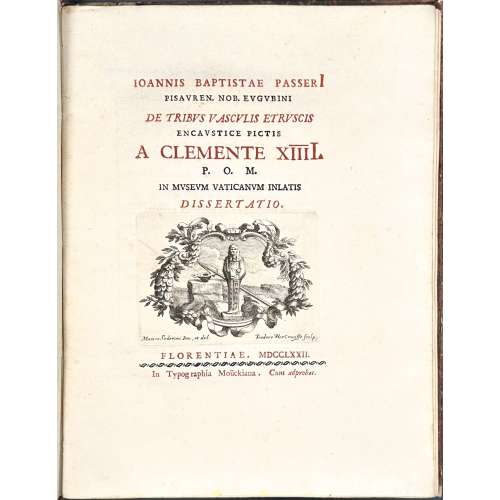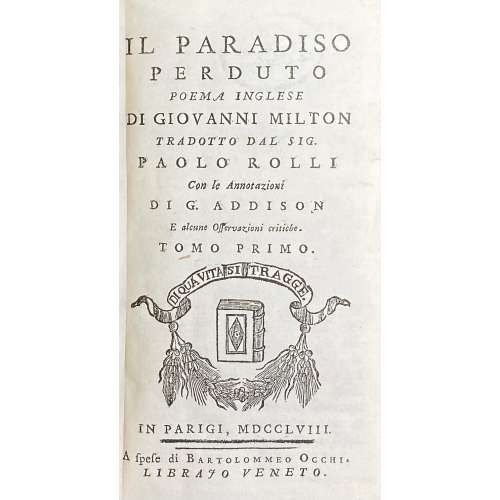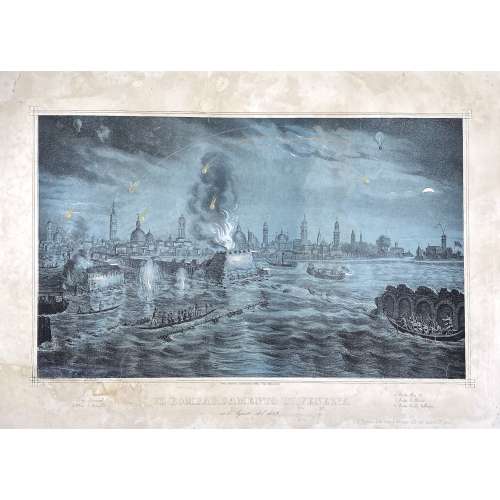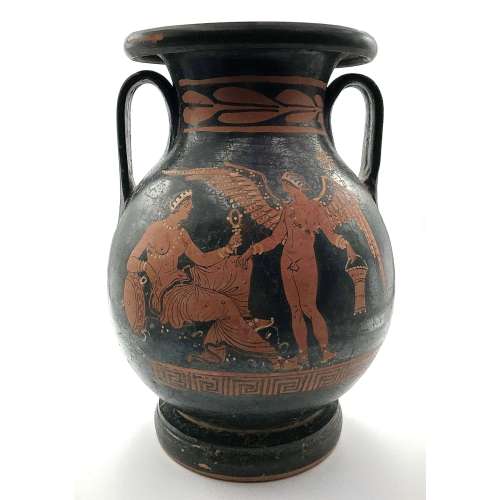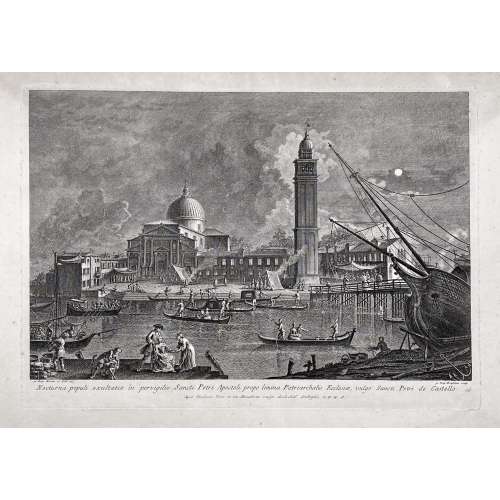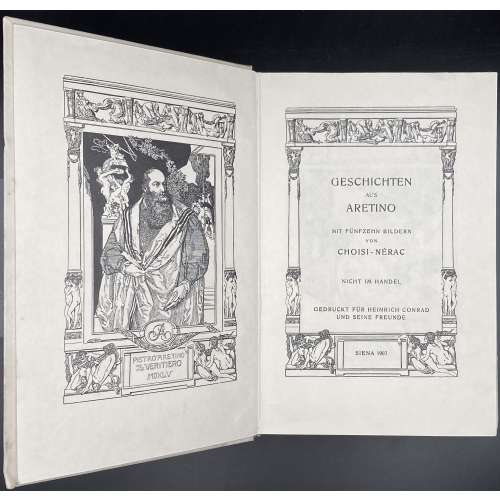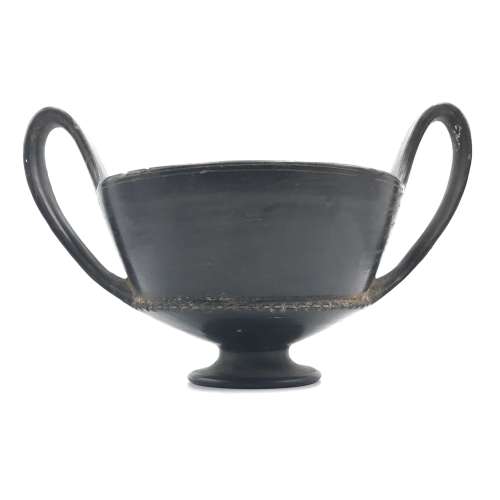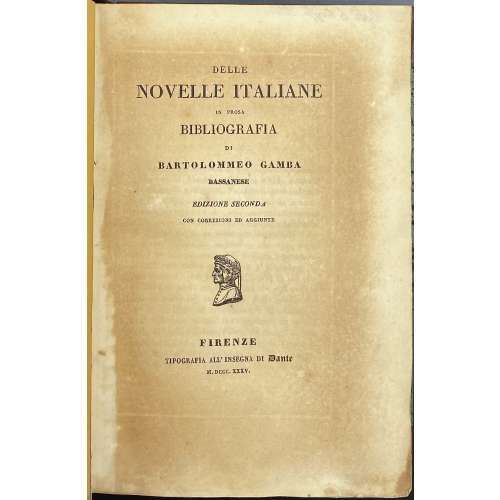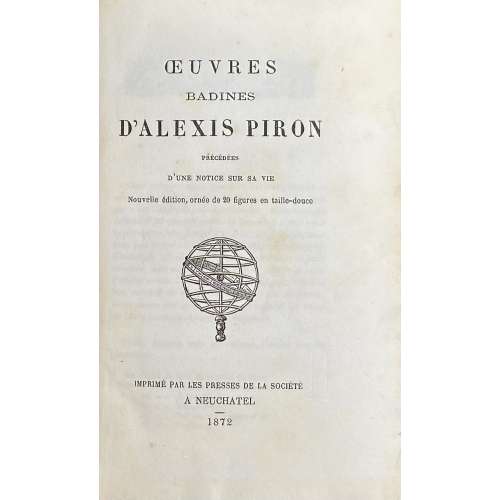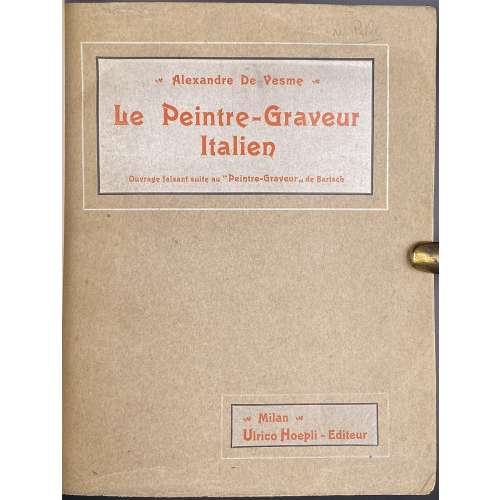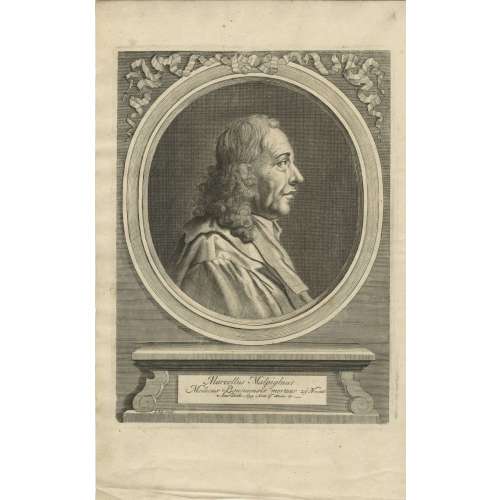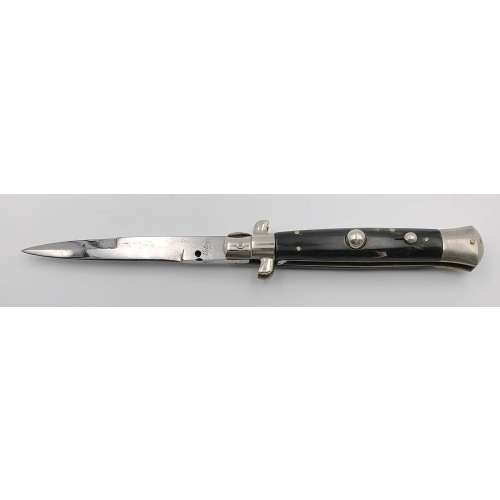Single volume, 17.1 x 11.2 cm, quarter black sheepskin over faux chagrin, gilt lettering to spine, marbled endpapers, bottom and outer margin untrimmed, pp.: [i-v] vi- xxxvi, [1] 2-218 [2], collated 4to: π
2, a-d
4, 1-27
4 28
2, total 256 pages or 128 leaves, plus 20 engraved plates by Paul Sellier, including frontispiece portrait of Alexis Piron after bust by Caffieri. Vol. 8 of
Bibliothèque Libre, Œuvres badines de Piron, printed on February 15, 1872. Text printed on dense wove paper watermarked
P or
M, plates printed on India wove paper. A reprint of an edition published in 1796 plus illustrations.
Title-page: ŒUVRES | BADINES |
D’ALEXIS PIRON | PRÉCÉDÉES | D’UNE NOTICE SUR SA VIE | Nouvelle édition, ornée de 20 figures en taille-douce | {vignette} | IMPRIMÉ PAR LES PRESSES DE LA SOCIÉTÉ | A NEUCHATEL | – | 1872 ||
Limitation: 100 numbered copies, of which this is № 75.
Catalogue raisonné: Dutel I: A-788; Pia: 953-6; Kearney 377 (
Patrick J. Kearney. A Catalogue of the publications of Jules Gay, Jean-Jules Gay & Gay et Doucé, revised & expanded. — Santa Rosa, CA Scissors & Paste Bibliographies, 2019)
Catalogue Poulet-Malassis & ses amis description: № 81. Alexis PIRON. Œuvres badines précédées d’une notice sur sa vie. Nouvelle édition ornée de 20 figures en taille-douce. [ Jules Gay] Imprimé par les presses de la société, à Neufchatel, 1872. In-8, xxxvi, 218 pages et un feuillet d’achevé d’imprimer de table, demi-basane noire, dos à faux nerfs, tête et tranches naturelles. Illustré d’un portrait et de 20 figures par Paul Sellier. Tirage limité à 100 ex. numérotés. De la « Bibliothèque libre ou collection choisie d’ouvrages du genre libre, imprimés ou réimprimés par les soins de la Société des Bibliophiles Cosmopolites et pour les membres de cette société, à cent exemplaires numérotés ». Bibliographie : Pia 1030, Enfer 1274, Lem 3-454, Gay 5-339, PC 353, G* 38, Pey 203, Dutel A-788."
Contributors:
Alexis Piron (French, 1689 – 1773) – author.
Paul Sellier (French, 1842 – 19..?) – artist.
Jules Léopold Gay (French, 1807 – 1887) – publisher.
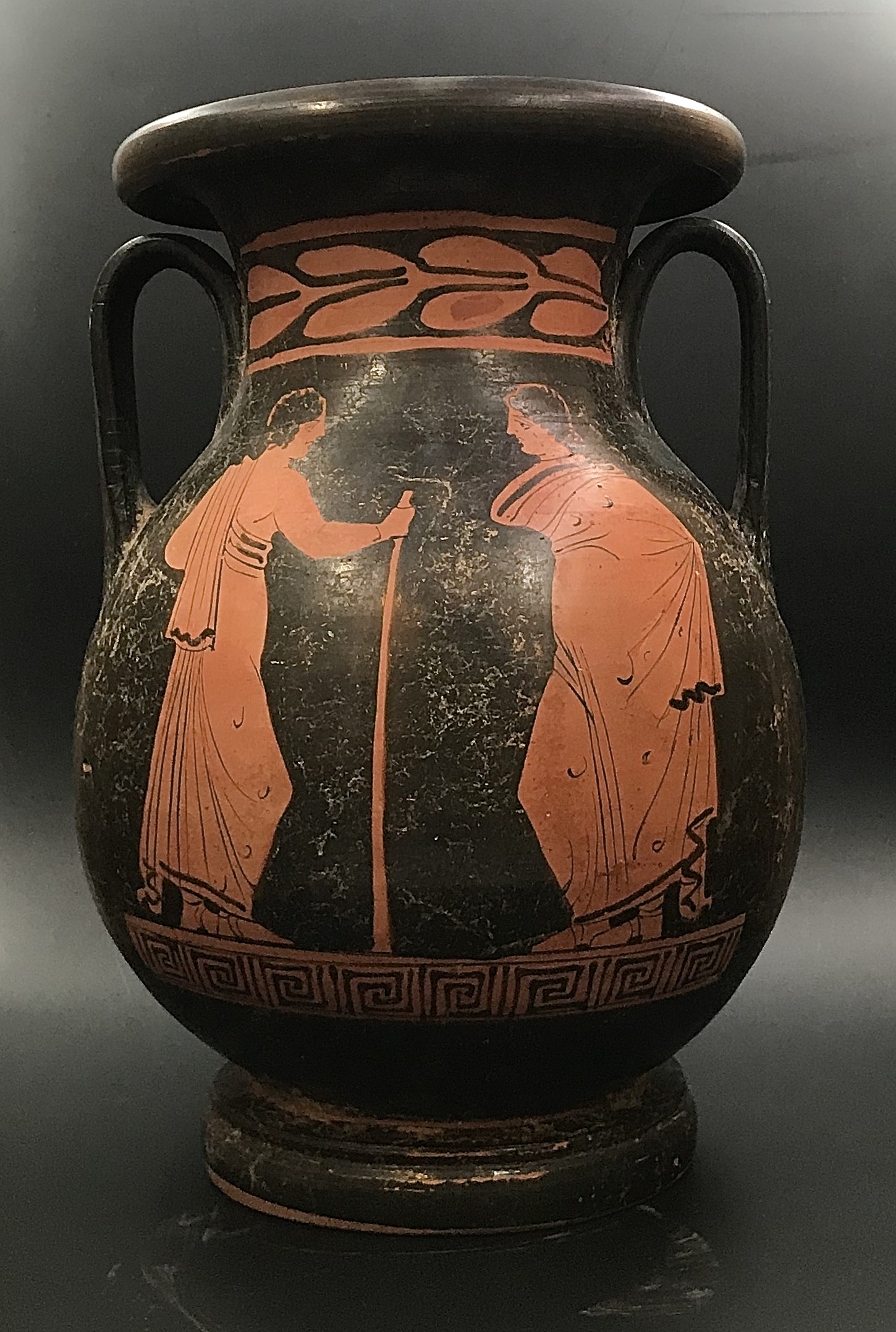
 This vase is attributed to Apulia, ca. 330 BCE. Passeri was probably wrong to attribute this type of vessel to Etruscan vase painting, produced from the 7th through the 4th centuries BC.
Contributors:
Giovanni Battista Passeri (Italian, 1694 – 1780) – author.
Francesco Moücke (Italian, fl. 1729 – 1787) – publisher.
Pope Clement XIV [Ganganelli, Giovanni Vincenzo Antonio] (Italian, 1705 – 1774) – dedicatee.
Artists:
Mauro Soderini (Italian, 1704 – after 1751)
Carlo Spiridione Mariotti (Italian, 1726 – 1790)
Lorenzo del Moro (Italian, 1677 – 1735)
Engravers:
Theodor Vercruys [Teodoro Vercruysse] (Dutch, 1678 – 1739)
Francesco Allegrini da Gubbio (Italian, 1587 – 1663)
Carlo Bartolomeo Gregori (Italian, 1702 – 1759)
This vase is attributed to Apulia, ca. 330 BCE. Passeri was probably wrong to attribute this type of vessel to Etruscan vase painting, produced from the 7th through the 4th centuries BC.
Contributors:
Giovanni Battista Passeri (Italian, 1694 – 1780) – author.
Francesco Moücke (Italian, fl. 1729 – 1787) – publisher.
Pope Clement XIV [Ganganelli, Giovanni Vincenzo Antonio] (Italian, 1705 – 1774) – dedicatee.
Artists:
Mauro Soderini (Italian, 1704 – after 1751)
Carlo Spiridione Mariotti (Italian, 1726 – 1790)
Lorenzo del Moro (Italian, 1677 – 1735)
Engravers:
Theodor Vercruys [Teodoro Vercruysse] (Dutch, 1678 – 1739)
Francesco Allegrini da Gubbio (Italian, 1587 – 1663)
Carlo Bartolomeo Gregori (Italian, 1702 – 1759) 

